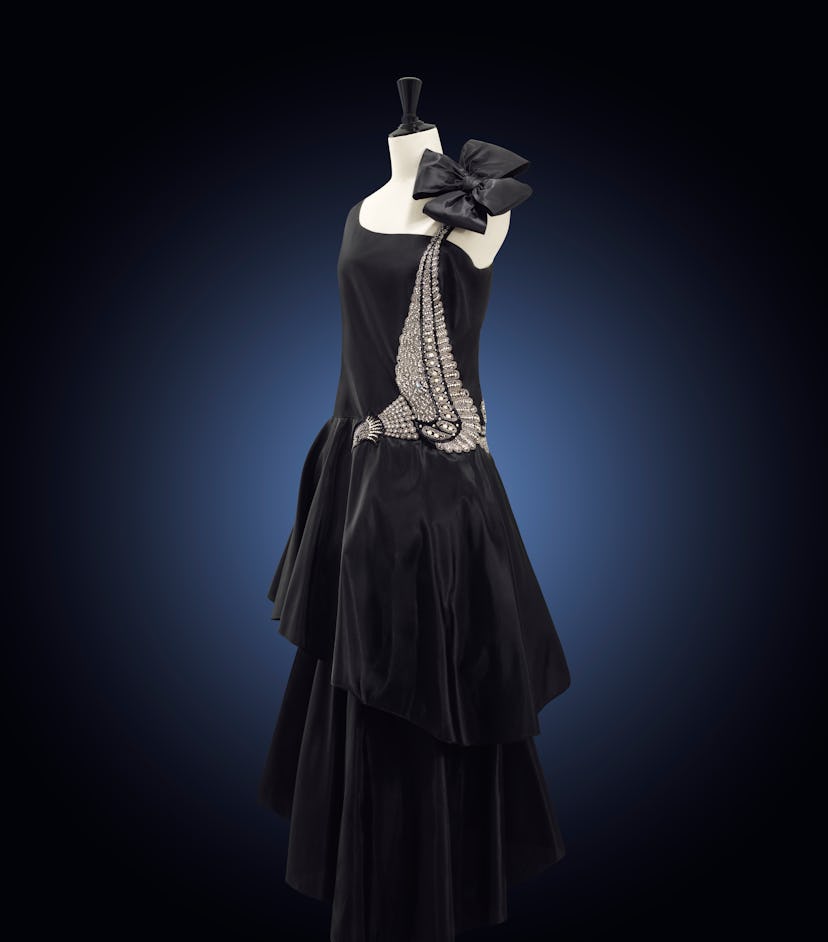SCAD FASH Museum’s Jeanne Lanvin Show Gives the Designer Her Much-Deserved Due

On Thursday, April 3, Tory Burch was honored with the Savannah College of Art and Design’s Étoile Award. In a conversation alongside former W editor in chief Stefano Tonchi, Burch was recognized for her recent “Toryssaince,” but also her impressive representation of the modern woman. Burch raised three boys, ran her own company, birthed a foundation, and remains at the top of her game to this day. In many ways, she’s a contemporary parallel to a woman born almost exactly 100 years before her, one also currently being honored by SCAD: Jeanne Lanvin.
In addition to Burch’s award, SCAD’s annual showcase SCADstyle 2025 featured conversations with designers like Willy Chavarria and Eileen Fisher, a panel on AI, and the opening of two new exhibitions at the school’s Atlanta-based museum. On April 4, SCAD FASH Museum unveiled Jeanne Lanvin: Haute Couture Heritage, the first U.S. show dedicated to French designer’s work.
Jeanne Lanvin by Edward Steichen, November 1926.
Jeanne Lanvin features over 60 designs from the late 1890s to 1947. The show also marks the fifth collaboration between SCAD and Fondation Azzedine Alaïa, which provided the majority of the pieces for the exhibition (many of the pieces hailed from Alaïa’s personal archive). “We were doing an inventory of the collection and we saw all the [Lanvin] garments,” Gaël Mamine, guest curator and head of collections at Fondation Azzedine Alaïa, tells W. “We said, ‘These are a real treasure, and we have to show them.’”
Mamine worked with SCAD FASH Museums’ creative director, Rafael Gomes, on the exhibition, which also includes three pieces from the Parodi Costume Collection in Miami. Together, they created a retrospective that tells the story of Jeanne Lanvin—an often-forgotten figure in fashion history.
“She’s a big name, but we don’t know her,” says Miguel Albero, curator at Fondation Azzedine Alaïa, the night of the exhibition’s opening. Lanvin is the oldest operating couture house, yet it’s often left out of the fashion conversation. The last time a museum held a solo show of Lanvin’s work was in 2015 at Paris’s Palais Galliera. “I remember I saw the exhibition in Paris, and I was so impressed,” Gomes recalls. “And I wanted to bring it to the U.S.—that’s when the conversations started.”
Ten years later, and Gomes’s dream finally became a reality. The timing couldn’t be more appropriate, considering the current shifts at the house of Lanvin. Back in June 2024, Peter Copping was named the brand’s new creative director, and he made his debut in January of this year.
Despite the excitement surrounding the modern Lanvin, Jeanne Lanvin is much more concerned with the past. The show focuses on the woman herself; a succinct timeline of her life tells of Lanvin’s impoverished beginnings in Paris, her millinery work, and the birth and continued influence of her daughter, Marie-Blanche de Polignac.
“Pureté” afternoon dress and “Bergere Legere” dress, both from Lanvin haute couture spring/summer 1926.
The clothing display begins with the oldest pieces that could be placed on mannequins, hailing from the 1920s. The exhibition is more or less chronological, with some of the more fragile creations (“Our sleeping beauties,” Gomes jokes) lying safely in replicas of the glass cabinets found in the Lanvin archives.
The show itself—set in a space painted Lanvin blue—puts Lanvin’s playful craftsmanship on full display. Her designs are deceptively simple, and while often decorated, they’re done modestly and effectively—with top stitching and embellishments created from layered sequins.
“It’s all about the techniques, all about the handcraft, all about the idea you can do something really strong with nothing,” Mamine says. “You can create something really elegant, soft, and chic with such few elements. It’s all about the purity of the line.” Mamine believes it was this craftsmanship that drew Alaïa to Lanvin’s work. “It’s interesting to get that vision of a couturier who knows technique and who pays homage to someone older,” he said of Alaïa’s deference toward Lanvin.
While the show is undoubtedly about Lanvin, there are cameos of other characters in her story. Alaïa is the collector who helped to keep Lanvin’s legacy alive, while Copping is the man tasked with bringing it into the future. In fact, the exhibition ends with a vignette: a snapshot of Copping’s atelier in Paris, featuring prototypes from his first collection with the brand.
And then there’s de Polignac, Lanvin’s daughter, who inspired the designer from the beginning, and who took over the house upon her mother’s death. She didn’t design, but acted as a kind of creative director, and five of the garments from her time in charge of the brand end the show.
An installation shot of Jeanne Lanvin: Haute Couture heritage.
And while Tory Burch herself is not technically featured in the exhibition, the timing of her talk—which took place on the day of the show’s opening—feels apt, like another continuation of Lanvin’s legacy.
“[Lanvin] was an advocator for women’s rights,” says Gomes. “She was a fighter. She stayed positive in very difficult times.” Lanvin worked through the Great Depression and World War II, he notes. “She was such an inspirational figure, and we need this inspiration right now.”
Jeanne Lanvin: Haute Couture Heritage is on display at SCAD FASH Museum from April 4, 2025-August 31, 2025.
This article was originally published on